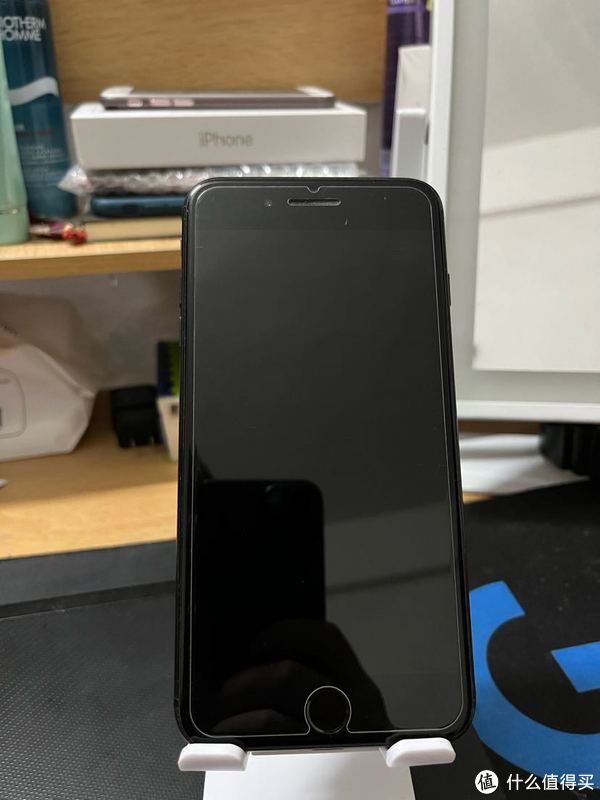前言
在我们平常工作中,总会有这样的事情发生:服务无法承受过多的请求而被打挂。
一般我们可以从两个方面处理:
- 增加节点,水平扩展(钱总是万能的)
- 对请求量过高的接口进行限流(没钱也不是不可以)
随着这样的事情发生多了,系统就会可以预计的朝这样的方向演变:
- 单个接口的限流 -> 多个接口的限流
觉醒能力:限流可以配置,想要对哪个接口进行限流,就改下配置,立即生效。
- 单个系统需要限流 -> 多个系统需要限流
觉醒能力:限流功能组件化,后续还有系统需要限流功能,引入依赖即可,不需要重复开发。
- 等等
别说,真的有!今天我们要认识的主角
Sentinel就是这样的又大又圆的轮子~介绍 随着微服务的流行,服务和服务之间的稳定性变得越来越重要。Sentinel 是面向分布式服务架构的流量控制组件,主要以流量为切入点,从流量控制、熔断降级、系统自适应保护等多个维度来帮助您保障微服务的稳定性。
官网地址:https://sentinelguard.io/zh-cn/
话不多说,先来个案例感受感受
案例 需求:要求每秒钟通过的qps限定在20
注:案例中所有统计相关的代码只是为了更加直观的体现sentinel的作用
引入依赖:
com.alibaba.csp
sentinel-core
1.8.2
1. 定义流控规则
private void initFlowRules() {
// 定义流控规则
FlowRule rule = new FlowRule();
// 资源名与需要限流的资源名相同
rule.setResource("HelloWorld");
// 设置限流方式为QPS
rule.setGrade(RuleConstant.FLOW_GRADE_QPS);
// 设置QPS为20
rule.setCount(20);
// 加载规则
FlowRuleManager.loadRules(Collections.singletonList(rule));
}2. 模拟请求
// 记录请求总数
private static final AtomicInteger TOTAL = new AtomicInteger();
// 记录请求通过数
private static final AtomicInteger PASS = new AtomicInteger();
// 记录请求拒绝数
private static final AtomicInteger BLOCK = new AtomicInteger();
private void request() {
for (int i = 0;
i < 30;
i++) {
new Thread(() -> {
while (true){
// 记录总qps
TOTAL.incrementAndGet();
// 进行限流
try (Entry entry = SphU.entry("HelloWorld")) {
// 记录通过数
PASS.incrementAndGet();
} catch (BlockException e) {
// 记录拒绝数
BLOCK.incrementAndGet();
}
// 模拟业务等待0-50毫秒
try {
TimeUnit.MILLISECONDS.sleep(new Random().nextInt(50));
} catch (InterruptedException ignored) {
}
}
}).start();
}
}3. 统计
public void count() {
new Thread(() -> {
int oldTotal = 0, oldPass = 0, oldBlock = 0;
while (true){
// 计算当前qps
int total = TOTAL.get();
int secondsTotal = total - oldTotal;
oldTotal = total;
// 计算每秒通过数
int pass = PASS.get();
int secondsPass = pass - oldPass;
oldPass = pass;
// 计算每秒拒绝数
int block = BLOCK.get();
int secondsBlock = block - oldBlock;
oldBlock = block;
log.info("当前qps:{}, pass: {}, block:{}", secondsTotal, secondsPass, secondsBlock);
try {
// 停顿一秒
TimeUnit.SECONDS.sleep(1);
} catch (InterruptedException ignored) {
}
}
}).start();
}4.测试
@Test
public void testBlock() throws IOException {
// 初始化规则
this.initFlowRules();
// 模拟高并发访问
this.request();
// 统计qps
this.count();
// 防止程序终止
System.in.read();
}5.测试结果

文章图片
总体来说,测试结果符合预期思考 以上案例是最简单的入门案例,也是Sentinel的核心所在。
其中关键的代码便是:SphU.entry("HelloWorld")
如果还想在其他业务代码中增加限流,则需要做出如下修改并增加流控规则
try (Entry entry = SphU.entry("资源名")) {
// 业务代码
} catch (BlockException e) {
// 根据异常进行处理
}但是很明显,这是一个通用代码块,唯一的变量就是"资源名",我们很容易就想到通过切面的方式进行优化
如果是你,你会想要怎么改造它呢?
我们先来看看Sentinel的切面使用方式吧
整合SpringBoot 1.引入注解依赖
com.alibaba.csp
sentinel-annotation-aspectj
1.8.2
2. 编写Controller&Servcie的Demo
@RestController
@RequestMapping("/foo")
public class FooController {@Autowired
private FooService fooService;
@GetMapping
public String hello(String name) {
return fooService.hello(name);
}
}public interface FooService {String hello(String name);
}@Service
public class FooServiceImpl implements FooService {@Override
public String hello(String name){
return "hello " + name;
}
}3. 开启切面
@Configuration
public class SentinelAspectConfiguration {@Bean
public SentinelResourceAspect sentinelResourceAspect() {
return new SentinelResourceAspect();
}
}4. 增加注解与限流处理
@SentinelResource(value = "https://www.it610.com/article/hello", blockHandler = "exceptionHandler")
@Override
public String hello(String name){
return "hello " + name;
}
public String exceptionHandler(String name, BlockException ex) {
return "被限流了";
}blockHandler: 限流对应的处理方法,方法参数和返回值与业务方法相同,对应着入门案例中的catch逻辑关于
SentinelResource注解的更多信息:https://github.com/alibaba/Se...5. 配置流控规则启动
@SpringBootApplication
public class SentinelDemoApplication {public static void main(String[] args) {
// 初始化流控规则
initFlowRules();
SpringApplication.run(SentinelDemoApplication.class, args);
}private static void initFlowRules(){
// 定义流控规则
FlowRule rule = new FlowRule();
// 资源名注解中的相同
rule.setResource("hello");
// 设置限流方式为QPS
rule.setGrade(RuleConstant.FLOW_GRADE_QPS);
// 设置QPS为2
rule.setCount(2);
// 加载规则
FlowRuleManager.loadRules(Collections.singletonList(rule));
}
}6.测试
curl 'http://localhost:8080/foo?name=张三'
7.结果

文章图片
在页面上多刷新几次就将出现我们在exceptionHanlder中返回的"被限流了"提示语再次思考 整合是整合了,不知道大家有没有像我一样:有股吃了苍蝇一般的难受感
一个注解就要配一个限流规则,反正我算是吐了。
有关限流异常处理的逻辑可以使用公共的,大家可以查看上面贴出的官方文档链接那么我们应该怎么样才能让自己内心畅通呢?
我们仔细品一下加载规则的逻辑,如果我们把这个步骤写成一个接口?
哦豁,那我这个规则岂不是想加就加,想改就改?
这里我就不演示了,因为Sentinel已经把这件事情做了,并且还很贴心的做了一个控制台~
整合Sentinel控制台 1. 安装Sentinel控制台
下载jar包 下载地址:https://github.com/alibaba/Se...
启动
java -Dserver.port=8080 -Dcsp.sentinel.dashboard.server=localhost:8080 -Dproject.name=sentinel-dashboard -jar sentinel-dashboard.jar默认账号密码为:sentinel sentinel2. 添加依赖
如果想要修改默认的账号密码,可增加参数
-Dsentinel.dashboard.auth.username=sentinel
-Dsentinel.dashboard.auth.password=123456
com.alibaba.csp
sentinel-transport-simple-http
1.8.2
com.alibaba.csp
sentinel-spring-webmvc-adapter
1.8.2
3. 编写测试接口
@GetMapping("/test")
public String test() {
return "ok";
}4. 配置统一异常处理
@Slf4j
public class MyBlockExceptionHandler implements BlockExceptionHandler {
@Override
public void handle(HttpServletRequest request, HttpServletResponse response, BlockException e) throws Exception {
response.setContentType(MediaType.APPLICATION_JSON_VALUE);
response.setStatus(HttpServletResponse.SC_OK);
try (PrintWriter out = response.getWriter()) {
out.write(new ObjectMapper().writeValueAsString("{\"message\":\"被限流了\"}"));
out.flush();
}
catch (IOException ignored) {
}
}
}将处理器加入到拦截器中
@Configuration
public class InterceptorConfig implements WebMvcConfigurer {@Override
public void addInterceptors(InterceptorRegistry registry) {
// Add Sentinel interceptor
addSpringMvcInterceptor(registry);
}private void addSpringMvcInterceptor(InterceptorRegistry registry) {
SentinelWebMvcConfig config = new SentinelWebMvcConfig();
config.setBlockExceptionHandler(new MyBlockExceptionHandler());
// 区分请求方式
config.setHttpMethodSpecify(true);
registry.addInterceptor(new SentinelWebInterceptor(config)).addPathPatterns("/**");
}
}6.配置控制台地址
在resources下新建
sentinel.properties配置文件#应用名称
project.name=sentinel-demo
#sentinel控制台地址
csp.sentinel.dashboard.server=localhost:80815.测试
第一次请求接口用于触发控制台初始化
curl 'http://localhost:8080/foo/test'
打开控制台并登录

文章图片
在簇点链路栏中可以看到出现了刚才访问的资源地址
点击
+流控按钮
文章图片
一个qps阈值为2的规则
再次测试,多刷几次:curl 'http://localhost:8080/foo/test'

文章图片
配置已然生效眼尖的小伙伴已经发现了:左边的菜单栏好多规则可以配置,我们下次再聊吧~
问题 确实,在加入控制台之后解决了之前的问题,但是又产生了新的问题,不知道小伙伴有没有发现?
之前我们的流控规则是写在代码里的,服务停止重启都会重新加载到内存中。
现在我们把规则配置在sentinel控制台,由控制台推送到服务中。
注意:我们启动sentinel时并没有配置过数据库,所以如果服务重启了,配置会消失吗?
答案是会的,那么又怎么才能解决这个问题呢?
由于太久没更新过了,还没恢复状态,今天的内容也挺多了,下次吧~
小结 今天介绍了Sentinel这个强大的流量防护工具——虽然只是初窥门径,但不妨碍大家感受到他的强大之处。
我们从一个最基本的案例出发,通过对上一个案例的思考,引出下一个案例的解决方案,循序渐进。
同时在最后,我还留下了一点点问题供大家思考,大家也可以上官网进行寻找解决方案。
最后,希望大家有所收获~
下期:Sentinel控制台&整合SpringCloud
想要了解更多精彩内容,欢迎关注公众号:程序员阿鉴
【Sentinel流量防卫兵】个人博客空间:https://zijiancode.cn
推荐阅读
- SpringCloud浅尝(六)——Bus
- SpringCloud浅尝(三)——Eureka
- SpringCloud浅尝(十)——Sleuth ZipKin
- SpringCloud浅尝(九)——Hystrix Dashboard
- SpringCloud浅尝(八)——Hystrix
- SpringCloud(三)多节点高可用Eureka注册中心集群
- springcloud搭建eureka服务
- SpringCloud之 Eureka 的服务治理
- 搭建微服务(服务提供者与服务消费者)
- springcloud 服务调用成功几次之后都会失败














